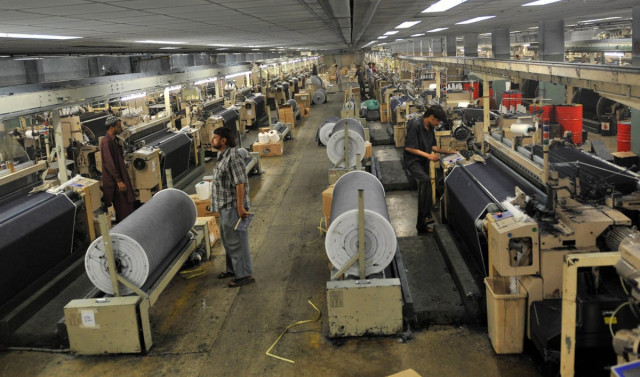Pakistani textiles take a hit, orders drop 50%
Despite being the 4th largest exhibitor, Pakistan fails to attract buyers

PHOTO: AFP
Pakistan, the 4th largest exhibitor at the Heimtextil Fair Germany, received almost half the number of order this year compared to the previous year.
We represent the entire textile industry
Heimtextil is a mega event for all textile millers and exporters of the world, where this year around 220 Pakistani exhibitors participated under the Trade and Development Authority of Pakistan (TDAP) umbrella at the Pakistan pavilion.
“Pakistani exporters have seen a massive drop in international orders lately, due to the energy crisis and the slowdown of global economy,” noted an exhibitor at the Heimtextile Fair and Ayesha Textile Mills CEO Abdulla Kamal, while talking to The Express Tribune.
“One of the main reasons behind receiving fewer orders has been the exporters’ inability to dispatch consignments in time due to energy shortages,” he added.
“Despite the advantages of having cheap labour and producing better cotton, the exporters’ expectations could not be met due to the energy and worsening law and order situation.”
Textile industry in its worst patch in history
He said international buyers were moving away from Pakistani market due to delay in shipments. “On the other hand, China is very good in timely delivery.
“This year China has got the edge over all other participants; the first to take full advantage of the exhibition,” he added.
The global economic slowdown has also played a key role in keeping buyers away from the recent exhibition. “Europe is passing through a low-growth phase,” remarked Kamal. He said during the peak textile season, the government severs the gas supply. This time, though, the situation was better since the government cut supply to domestic consumers in order to facilitate the industries.
Moreover, he said the law and order situation in the country was another major hurdle in grabbing orders. “The recent terrorist attacks on schools and colleges have dented Pakistan’s reputation internationally. Buyers are frightened to even come visit us, let alone give orders,” he added.
Japan to step up textile imports from Pakistan
“Even the old ones are not visiting Pakistan due to which we have to fix meetings abroad,” he lamented, adding that this time India and Bangladesh got a far better response compared to Pakistan.
Another hurdle, identified by Kamal, was the shortage of gas, “the textile mills need steam for processing the fabric.”
He was of the view that the Liquefied Natural Gas (LNG) was not an alternative.
“This winter is the first season when we are running our mills on LNG, which is very expensive. It is 25% more expensive than natural gas (CNG). That, of course, increases the cost of production.”
While requesting the government to take up the issues of energy and gas seriously, he said the country had very good production capacity and machineries and if only the internal issues were resolved, the textile sector could again reach its potential capacity of $25 billion exports, compared to the current figure of $13.9 billion.
Published in The Express Tribune, February 3rd, 2016.
Like Business on Facebook, follow @TribuneBiz on Twitter to stay informed and join in the conversation.



















COMMENTS
Comments are moderated and generally will be posted if they are on-topic and not abusive.
For more information, please see our Comments FAQ